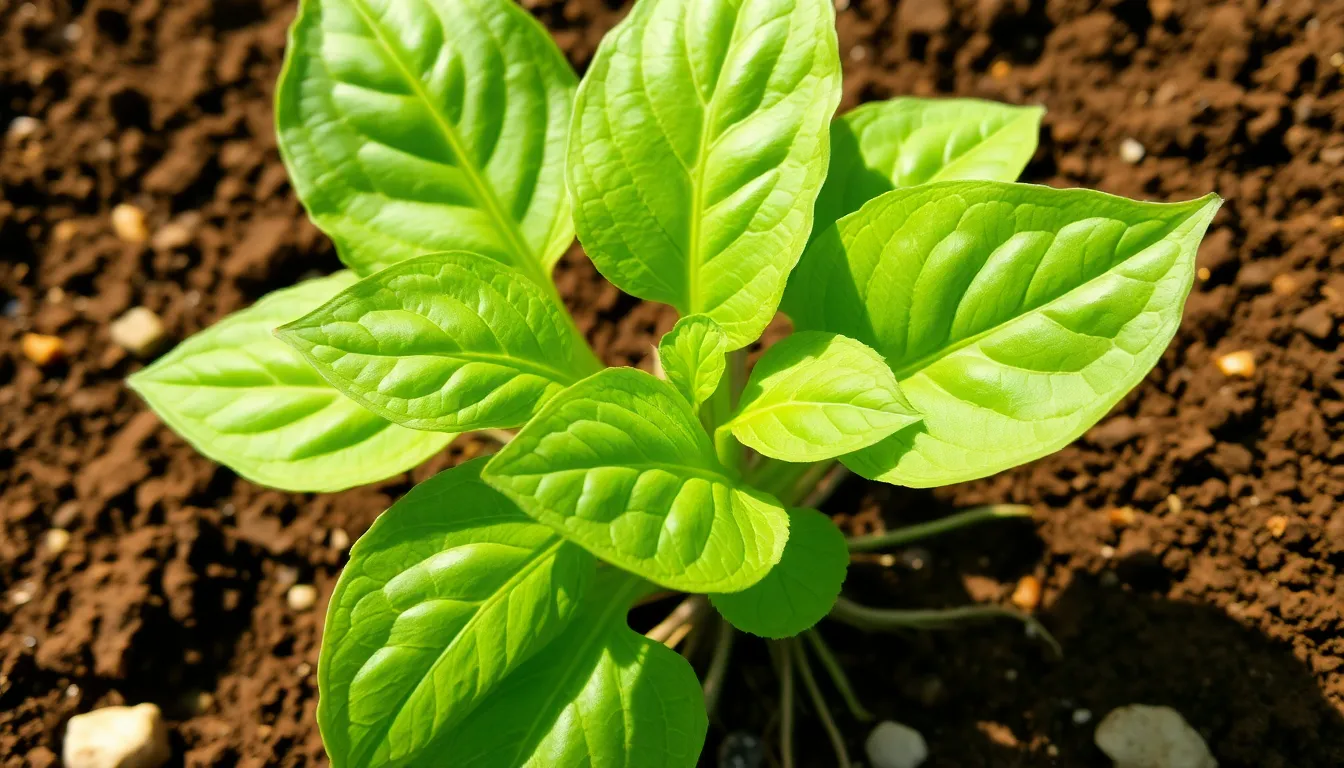Plant Uptake Definition: Discover How Plants Absorb Vital Nutrients and Water

Plants are nature’s little superheroes, silently working their magic while we go about our busy lives. But have you ever wondered how they manage to absorb nutrients and water like pros? Enter “plant uptake,” the process that transforms thirsty greens into thriving ecosystems. It’s like a buffet for plants, where they feast on essential elements from the soil and air, fueling their growth and keeping our planet healthy.
Plant Uptake Definition
Plant uptake refers to the process by which plants absorb water and nutrients from their environment. This essential function enables healthy growth and development. Roots typically play a primary role in this absorption, drawing moisture and minerals from the soil.
Nutrients such as nitrogen, phosphorus, and potassium are crucial for various plant functions. These elements support photosynthesis, energy transfer, and cell division. Water, on the other hand, serves not only as a solvent for nutrient transport but also as a key component in photosynthesis.
Factors influencing plant uptake include soil composition, moisture levels, and environmental conditions. Well-aerated soils often promote better root development, enhancing absorption. Moreover, the presence of mycorrhizal fungi can facilitate nutrient uptake by extending root networks.
Plants utilize specific mechanisms for uptake, including passive and active transport. Passive uptake occurs through diffusion, relying on concentration gradients. Active uptake requires energy to transport nutrients against these gradients.
Studies indicate that plant health correlates strongly with efficient nutrient and water uptake. Deficiencies can lead to stunted growth and reduced yields. Implementing practices like soil testing and fertilization can improve nutrient availability, optimizing plant uptake.
Innovations in agricultural technology, such as precision farming and smart irrigation, enhance overall uptake efficiency. These approaches integrate data analytics and automated systems, ensuring plants receive appropriate amounts of nutrients and water.
Importance of Plant Uptake

Plant uptake is vital for maintaining ecosystem health and promoting growth. Efficient nutrient and water acquisition determines a plant’s overall success.
Nutrient Acquisition
Nutrients obtained from the soil significantly influence plant vitality. Nitrogen supports protein synthesis, phosphorus fuels energy transfer, and potassium regulates various physiological processes. Soil health affects the availability of these essential elements. Plants also rely on symbiotic relationships, such as those with mycorrhizal fungi, to enhance nutrient absorption. These fungi increase the root surface area, enabling better access to nutrients. Practices like crop rotation and organic fertilization can improve soil richness and diversity, contributing to nutrient acquisition efficiency.
Water Absorption
Water absorption serves as a cornerstone for plant health. Roots extract moisture from the soil, ensuring the plant maintains turgor pressure and supports nutrient transport. Adequate moisture levels directly correlate with photosynthesis efficiency and overall biological function. Well-drained soils prevent waterlogging, which can hinder root respiration and absorption. Environmental conditions such as temperature and humidity also impact water uptake. Implementing irrigation systems, like drip irrigation, optimizes water availability and promotes efficient absorption, ultimately boosting plant productivity.
Mechanisms of Plant Uptake
Mechanisms of plant uptake encompass active transport and passive transport methods, enabling plants to absorb essential nutrients and water.
Active Transport
Active transport functions through energy expenditure to move nutrients against their concentration gradient. This process ensures plants acquire vital elements like potassium and nitrate from the soil, even when soil concentrations are lower. Transport proteins embedded in cell membranes facilitate this uptake, utilizing ATP as the energy source. For instance, roots actively transport minerals that contribute to critical growth processes. This method enhances nutrient availability, particularly in nutrient-poor soils, promoting healthier plant growth and increased yields.
Passive Transport
Passive transport operates through natural diffusion, moving water and nutrients from areas of high concentration to low concentration without energy input. Roots absorb water through osmosis, a key process that helps maintain cellular turgor pressure. Molecules pass through membrane channels, allowing essential nutrients like calcium and magnesium to enter. As a result, passive transport plays a significant role in nutrient and water absorption, particularly when environmental conditions remain favorable. Efficient passive transport supports overall plant vitality, allowing for optimal photosynthesis and growth.
Factors Influencing Plant Uptake
Several key factors play a crucial role in how efficiently plants absorb nutrients and water. Understanding these elements allows for improved agricultural practices and enhanced plant health.
Soil Composition
Soil composition significantly affects nutrient availability. Rich, loamy soils typically contain a balanced mixture of sand, silt, and clay, promoting optimal root development. Nutrient content, such as nitrogen, phosphorus, and potassium, directly correlates with soil quality. Organic matter enhances microbial activity, aiding nutrient breakdown and making them more accessible. It’s essential to conduct soil tests to determine nutrient levels and inform fertilization strategies. The presence of mycorrhizal fungi further boosts nutrient uptake by increasing root surface area. Crop rotation practices enrich soil diversity and help maintain a healthy nutrient balance, optimizing uptake for subsequent plant cycles.
Environmental Conditions
Environmental conditions also impact plant uptake efficiency. Temperature plays a vital role, as warmer soil often enhances nutrient solubility and microbial activity. High humidity levels lead to better water accessibility, as moisture in the air can supplement soil water. Light intensity influences photosynthesis rates, directly affecting overall plant health and nutrient demand. Plants rely on optimal weather conditions for effective water absorption. Extreme temperatures or drought stress can hinder uptake, resulting in nutrient deficiencies. Additionally, precipitation frequency affects soil moisture, creating a direct relationship between water availability and nutrient absorption. Using irrigation methods like drip irrigation can ensure adequate moisture levels during dry periods.
Conclusion
Understanding plant uptake is crucial for anyone interested in agriculture or gardening. This process not only supports plant growth but also contributes to the health of entire ecosystems. By recognizing the factors that influence nutrient and water absorption, individuals can implement effective practices to enhance plant vitality.

Utilizing methods like soil testing and organic fertilization can improve nutrient availability, while innovative technologies like precision farming can optimize water usage. Ultimately, fostering an environment that promotes efficient plant uptake leads to healthier plants and better yields, ensuring a sustainable future for agriculture.



